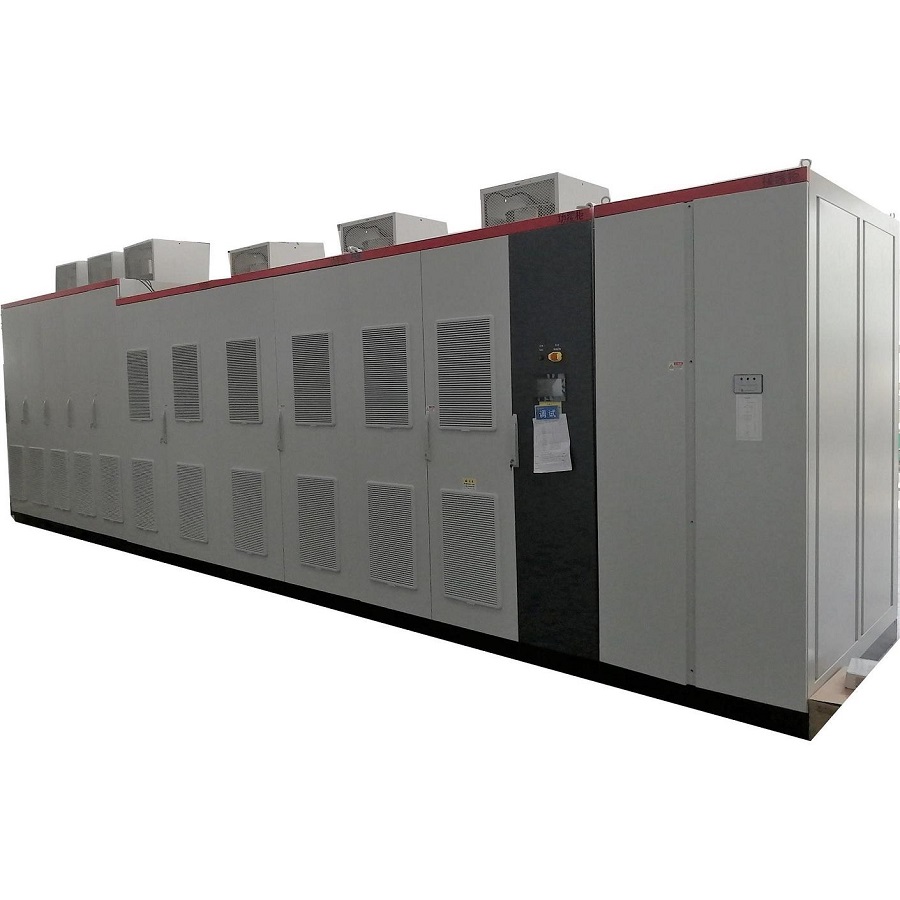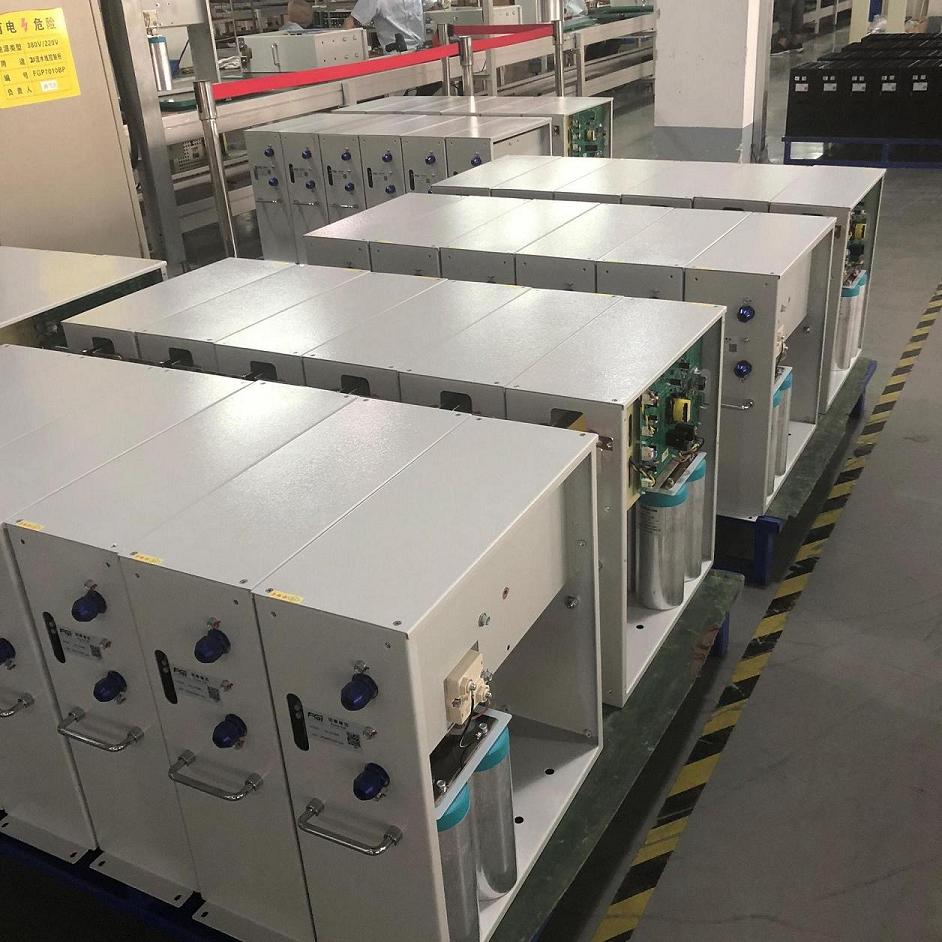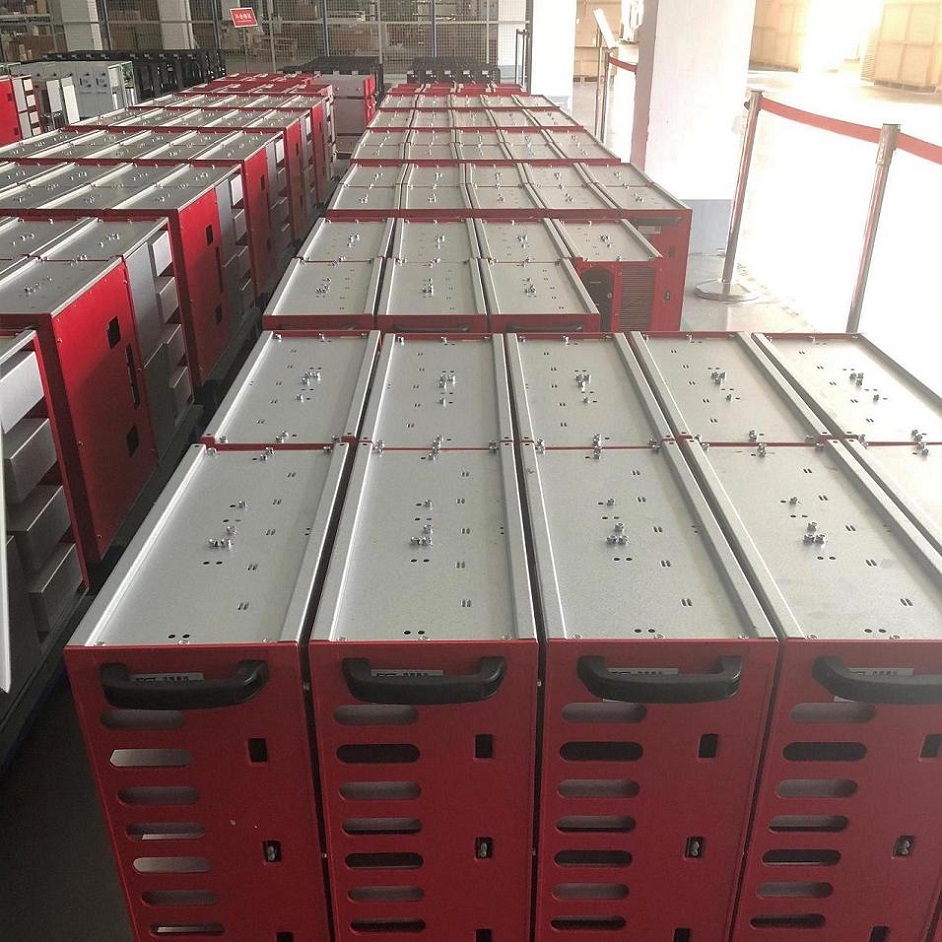A STATCOM (Static Synchronous Compensator,Dstatcom) is a voltage regulating device. It is based on a power electronics voltage source converter (VSC) and can act as either a source or sink of reactive AC power. It is a member of the flexible AC transmission systems (FACTS) family which detects and instantly compensates for voltage fluctuations or flicker, as well as controls power factor.
Brand:
ZDDQitem no.:
ZD-FGSVGPayment:
LC,TTmarket price:
$10000price range:
10000 - 100000/$1product origin:
ChinaColor:
RAL7032shipping port:
ShanghaiLead Time:
35daysOverview of Static Synchronous Compensator(STATCOM)
ZDDQ DistributionTATCOM(Static Synchronous Compensator,Dstatcom), a Voltage source converter (VSC) based modern compensation system, can act as a source or sink for reactive power(inductive and ccapacitive). It consists of a controllable part that can operate as capacitive and inductive power and keeps the reactive power flow constant in the system. If there is a need for reactive power in the supply grid, ZDDQ STATCOM can provide instant reactive power support to stabilize the grid. On contrary situation, it absorbs the additional VArs to ensure the stability of the networks.
With pulse-width modulation (PWM), voltage source converter provides faster converter control, which is pre-requisite for excellent flicker reduction. The fixed capacitor banks can be implemented in the system when inductive reactive power demand is less than capacitive.
ZDDQ STATCOM(Dstatcom) solution comes with advanced Control and Protection system. Equipped with modern touched screen user-interface(HMI), Our Control and Protection system provides excellent performance for voltage stabilization, flicker reduction, reactive power control, harmonics mitigation and power factor control.
 |
 |
STATCOM Technical Specificaiton
| ◆Rated capacity | ±1~±100Mvar |
| ◆Rated work voltage | 6kV~35kV |
| ◆Rate frequency | 50/60HZ |
| ◆Over-load capacity | more than 1.2 times overload |
| ◆Response time | ≤5ms |
| ◆Active power loss | ≤0.8% |
| ◆Total harmonic distortion | ≤3% |
| ◆Control power | 380VAC, 220VAC, or 220VDC |
| ◆Reactive power regulation | Compensate inductive and capacitive Vars continuously and smoothly. |
| ◆The start regulated reactive power | 5kvar |
| ◆The resolution of compensate current | 0.5A |
| ◆Communication interface | Ethernet, RS485, CAN, high-speed optical communication interface |
| ◆Communication protocol | MODBUS_RTU, ProfiBUS, CDT91, IEC61850-103/104, CANOPEN, User-defined,can be set on HMI. |
| ●Storage temperature | -30℃~+70℃ |
| ●Operating temperature | -10℃~+40℃ |
| ●Relative humidity | Month average value no more than 90% , no frost |
| ●Altitude | <2000m(more than 2000m need to customize) |
| ●Seismic intensity | 8 degree |
Main Features of STATCOM
STATCOM product with high performance, high reliability is designed to meet users’ demands of improving power factor of power transmission, compensating harmonic and the negative sequence of current. It is easy to operate. Its features are as follows,
■Better control for power grids, better load compensation, better power factor improvement
STATCOM increase system stability and power quality by providing voltage control and support, reactive power control, power oscillation damping, and increased power transfer capacity. STATCOM enables electro-intensive industrial processes to obtain a grid connection by controlling flicker level, harmonic voltage distortion, and voltage unbalance. STATCOM also allows renewables to be connected to the grid in compliance with grid code requirements by providing fault ride through support and voltage control.
■Optimal stability and quality
The STATCOM is geared to quickly inject significant inductive or capacitive power. Thus the STATCOM provides improved dynamic stability of transmission systems to reduce the risk of voltage collapse and blackout while avoiding deterioration of the power quality due to its multilevel configuration: generating unwanted harmonics is widely avoided.
■In harmony with harmonics – and best flicker reduction
Harmonics generation is low due to the use of MMC technology, resulting also in low noise emissions.
The extremely fast control of STATCOM allows in industrial applications highly efficient flicker reduction and even active reduction of the lower harmonics caused by a nonlinear load such as an electric arc furnace.
■Fastest response – efficient solution
The standardized component design allows minimized engineering efforts and provides an overall fast, efficient, modular, and cost-effective solution.
ZDDQ STATCOM control with its most advanced concept offers unsurpassed speed in controlling the IGBT semiconductors to precisely generate the desired flow of energy between the converter and the feeding network.

|
 |
POWER CELL OF HV STATCOM POWER CELL OF HV STATCOM
|
Model |
Rated voltage (kV) |
Rated capacity (Mvar) |
Size |
Remark |
Weight (kg) |
||
|
width (mm) |
height (mm) |
depth (mm) |
|||||
|
HV SVG-C1.0/6 |
6.6
|
1.0 |
3100
|
2400
|
1400
|
Iron core reactor |
2450 |
|
HV SVG-C1.5/6 |
1.5 |
||||||
|
HV SVG-C2.0/6 |
2.0 |
2850 |
|||||
|
HV SVG-C3.0/6 |
3.0 |
||||||
|
HV SVG-C4.0/6 |
4.0 |
3800 |
3450 |
||||
|
HV SVG-C5.0/6 |
5.0 |
||||||
|
HV SVG-C6.0/6 |
6.0 |
3600 |
Hollow reactor |
2750 |
|||
|
HV SVG-C7.0/6 |
7.0 |
3450 |
|||||
|
HV SVG-C8.0/6 |
8.0 |
5600
|
4600 |
||||
|
HV SVG-C9.0/6 |
9.0 |
4700 |
|||||
|
HV SVG-C10.0/6 |
10.0 |
4800 |
|||||
|
HV SVG-C11.0/6 |
11.0 |
4900 |
|||||
|
HV SVG-C12.0/6 |
12.0 |
5000 |
|||||
STATCOM Application in Typical Industries
For the difficulties of dynamic power quality control in substation, a compensation plan is presented in which cascade distribution static synchronous compensator (D-STATCOM) and switching capacitor work together. The method realizes the simultaneous compensation steady state for voltage regulation and impact load harmonics and reactive power. According to the application example, a complete D-STATCOM system testing and commissioning method is put forward, including the regular inspection, insulation test, protection test, reactive power regulating range and output harmonic test, responding time test, steady state voltage regulation test, loss test and load compensation test. The detailed test data are given as well. The experience and conclusion of the project provide reference for the design and application of similar equipment.
■Electric Arc Furnaces – voltage stabilisation reduces tap-to-tap time and electrode consumption.
■Rolling Mills – elimination of voltage and harmonic distortions reduces reactive power demand and increases electrical system capacity.
■Mining and heavy industry – dynamic reactive power compensation stabilise the power system, especially on large motor start up, ensuring reliability of the power system.
■Wind and solar farms – meeting strict grid connection criteria by providing dynamic voltage control and voltage stability at the common coupling point (PCC).
■Renewables markets – including solar farms, wind farms, solar panel installations.
Scan to WhatsApp:
